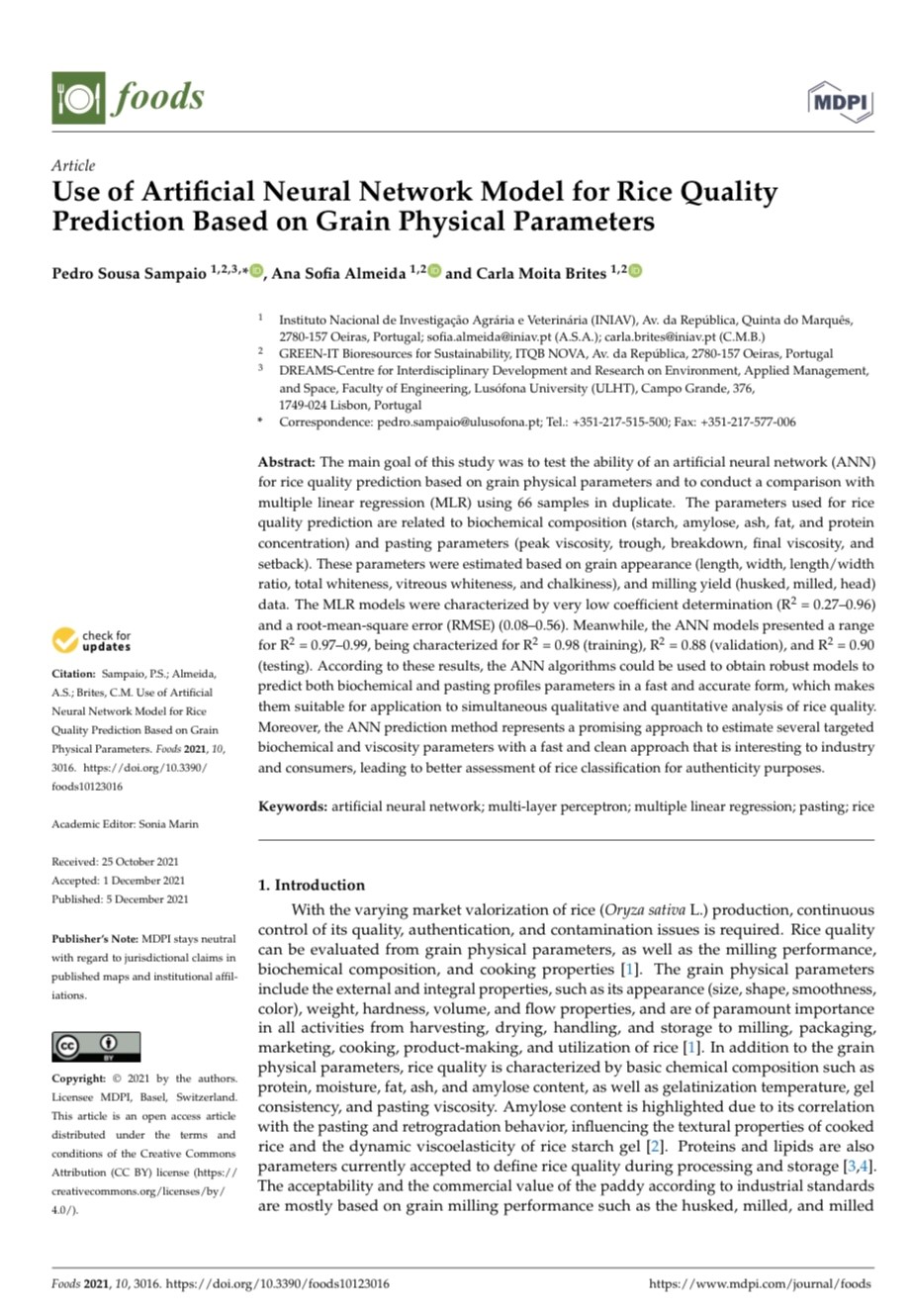New article for TRACE-RICE
"Use of Artificial Neural Network Model for Rice Quality Prediction Based on Grain Physical Parameters" is the new article published under the TRACE-RICE project. The main goal of this study was to test the ability of an artificial neural network (ANN) for rice quality prediction based on grain physical parameters and to conduct a comparison with multiple linear regression (MLR) using 66 samples in duplicate. The parameters used for rice quality prediction are related to biochemical composition (starch, amylose, ash, fat, and protein concentration) and pasting parameters (peak viscosity, trough, breakdown, final viscosity, and setback). These parameters were estimated based on grain appearance (length, width, length/width ratio, total whiteness, vitreous whiteness, and chalkiness), and milling yield (husked, milled, head) data. The MLR models were characterized by very low coefficient determination (R2 = 0.27–0.96) and a root-mean-square error (RMSE) (0.08–0.56). Meanwhile, the ANN models presented a range for R2 = 0.97–0.99, being characterized for R2 = 0.98 (training), R2 = 0.88 (validation), and R2 = 0.90 (testing). According to these results, the ANN algorithms could be used to obtain robust models to predict both biochemical and pasting profiles parameters in a fast and accurate form, which makes them suitable for application to simultaneous qualitative and quantitative analysis of rice quality. Moreover, the ANN prediction method represents a promising approach to estimate several targeted biochemical and viscosity parameters with a fast and clean approach that is interesting to industry and consumers, leading to better assessment of rice classification for authenticity purposes.


